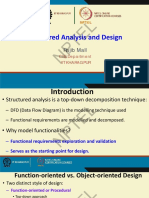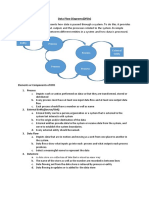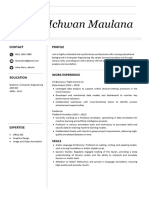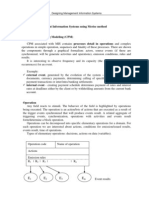0% found this document useful (0 votes)
16 views7 pagesData Flow Diagram Concepts and Case Study Analysis
The document explains Data Flow Diagrams (DFDs) as visual representations of information flows within a system, detailing their purpose, standard symbols, and levels of abstraction (0, 1, and 2). It includes a case study on the Smart Campus Navigation System, illustrating how DFDs can effectively depict user interactions, data management, and system processes. The DFDs serve as a communication tool for stakeholders to analyze and design the system architecture for improved usability and efficiency.
Uploaded by
adhyatmasinghchauhan20031Copyright
© © All Rights Reserved
We take content rights seriously. If you suspect this is your content, claim it here.
Available Formats
Download as DOCX, PDF, TXT or read online on Scribd
0% found this document useful (0 votes)
16 views7 pagesData Flow Diagram Concepts and Case Study Analysis
The document explains Data Flow Diagrams (DFDs) as visual representations of information flows within a system, detailing their purpose, standard symbols, and levels of abstraction (0, 1, and 2). It includes a case study on the Smart Campus Navigation System, illustrating how DFDs can effectively depict user interactions, data management, and system processes. The DFDs serve as a communication tool for stakeholders to analyze and design the system architecture for improved usability and efficiency.
Uploaded by
adhyatmasinghchauhan20031Copyright
© © All Rights Reserved
We take content rights seriously. If you suspect this is your content, claim it here.
Available Formats
Download as DOCX, PDF, TXT or read online on Scribd
/ 7












































































